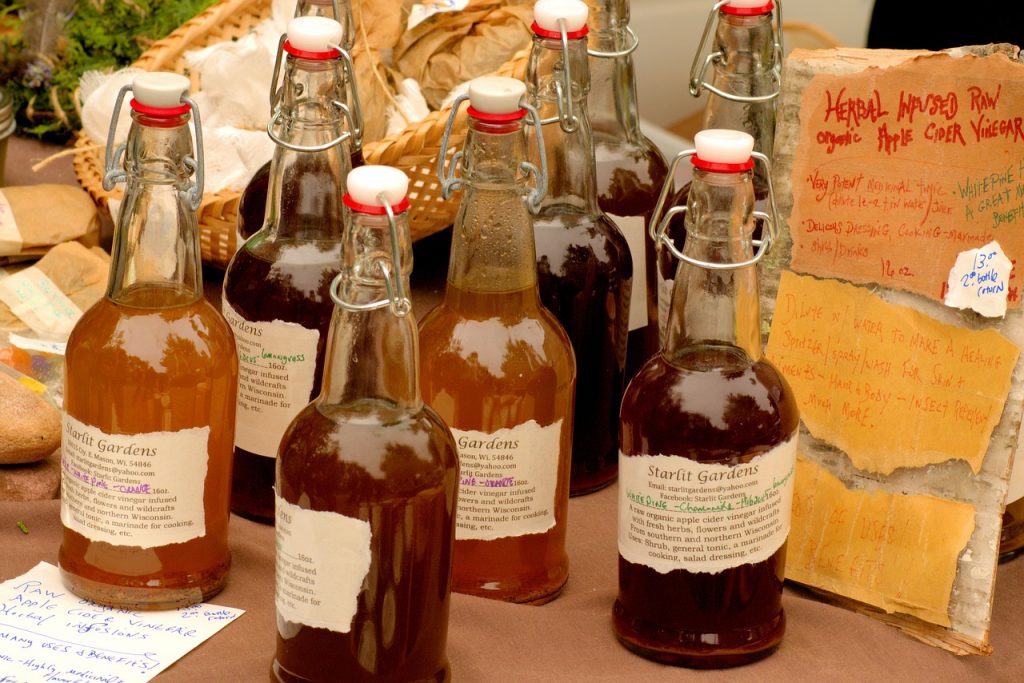Apple trees are amazing things. Almost every year they gift us with a bounty of free, delicious, nutritious fruit.
You can leave your apple trees to their own devices and they’ll serve you pretty well. But, if you really want to make the most of your trees there is a little work to be done in the orchard each month.

Follow our Monthly Orchard Planner to get the best out of your apple trees (which also includes advice on planting new trees):
January
If you still have any remaining fruit stored or frozen now is the ideal time to use it.
Pruning should be done now or more specifically ‘Winter Pruning’. Winter pruning covers several different types of plant management, restorative, formative and structural pruning should all ideally take place on an item over a year old on a frost free and dry day.
If you want to expand your orchard now is the time to cut scion wood from any trees you want to graft, again it is important that this is done whilst the tree isn’t actively growing.
The scions need to be kept dormant if you aren’t going to be using them immediately, which can be achieved by keeping them in the fridge wrapped in a bag with some moist kitchen roll.
For more about grafting and scion wood, check out this great explanatory video:
When pruning young trees be conscious of shape, it is much healthier for the tree to be shaped at a young age rather than an established tree.
Possibly the most important aspect of orchard management: If you fancy a knees up – Wassil is celebrated on January 17th. It is a traditional get together where you toast the orchards health, Traditions vary depending where you are, but nearly all involve cider and songs. Perhaps a good time to sample this year’s batch of cider for the first time?
New trees: Fruit trees should be planted when they are in a dormant state, bare of leaves and not in active growth. If you are too eager to plant young trees there’s a risk you could damage the roots, so make sure your tree is slightly more mature, so they can withstand the temperatures in January. It is a good idea to plant out the trees on days when Jack Frost hasn’t been, and the soil isn’t too waterlogged.
February
If you enjoy cider, you’ll find various cider festivals taking place in the local area. Otherwise, continue from January:
- You can still have your scion cuttings ready to go in the fridge.
- Bare rooted trees can still be planted out.
- Winer pruning of your established apple and pear trees can continue
- Formative pruning of young pear and apple trees can continue.
For more information about Winter Pruning, check out this video:
March
This is the last month for pruning your apple and pear trees and for planting any bare rooted trees.
Grafting should begin in March, if using your dormant scion wood, it is ideal to graft these during the beginning of spring, less damage should occur due to frost and dehydration before the sap heads up to heal the graft.
Mulching: If you are mulching trees that have had a hard winter or are less than a year old apply compost or a healthy lump of manure to the soil at the bottom of your trees.
April
It is a beautiful time of year for your apple trees and the early blossom is a stunning sign of spring.
Sadly, young trees need to have any blossom removed. I know it can be very tempting to gather the first fruit from your trees, but the energy required by the tree to produce the fruit would be better placed going towards its growth and health. If the young branches become laden with fruit they will ultimately snap or become damaged. Vital energy is better used to give you wonderful crops when the tree is more mature.
May
If you have chosen to stake any of your young trees, now can be a good time to loosen any that have become to tight. Your stakes should be firm enough into the ground to protect the trees from blowing down in the wind. Heavy winds can even affect the roots, breaking them off and inhibiting growth.
Most of your fruit trees will now be in full bloom and Mayday welcomes in the summer.
June
If the sun starts/continues to shine, you will need to water any young trees or older ones that appear to be struggling.
Get thinning! Thinning will mean you get less fruit, but they will be better quality and ultimately bigger. This is done by simply removing some of the small apples that start to appear in the tree. Again, you can focus the tree’s energy into fewer, but better fruit.
Dig out some 2×4 wood, and prop those branches. The last thing you want is heavy laden branches on new trees being damaged. This means they won’t perform next year.
Now depending on how committed you are you might want to wrap the trunk in corrugated cardboard, Moth larva will happily pupate on the cardboard and then you can remove it before the moths appear and attack your fruit.
More importantly, now is a brilliant time to drink last year’s cider in earnest!

July
If the forecast is to be believed it is going to be HOT in July, you are going to need to water your apple trees in particular the young ones.
If you don’t have the advantage of your garden not being grazed, the end of July is a great time to cut the grass and leave the cuttings to dry for a day or two before raking, this will enable any late bloomers to disperse their seeds.
Prune the young apple and pear trees. Just like your child’s first hair cut – don’t go crazy! Older trees will not need a prune unless they had a good haircut the previous winter and have lots of new water shoots appearing. It is best to do this pruning towards the end of the month so that the tree can recover before the harsh winter kicks in.
August
Now as far as apple production grows August is the time to put your feet up and enjoy your garden. Other fruit trees will still need your attention. For example plums will need to be harvested before the wasps get to them. Make some jam and get some frozen ready for a nice winter tart.
The very early apples may be ready by the end of the month. They normally don’t store very well, so you should eat as many as possible, put them in salads, and juice the rest.
September
If you haven’t grown the very early varieties, you’ll get your first whiff of apples now. Again, the first apples don’t store particularly well so get your smackers round them and enjoy. They do make beautifully sweet juice though so if you are planning on pressing don’t hang about, 3 days sitting in a tub tends to be your lot. They need to be picked and juiced within a few hours.
Towards the end of the month pears are perfect, if you are looking to combine apples and pears for a ‘pepple’ juice, these pears with a few tart apples are DELICIOUS.
October
Get pressing your fruit for juice or cider. It is entirely up to you if you use fruit that has just been harvested, or you store for a couple of days for the flavours to change slightly.
The later the apple, generally, the better they are at storing. Some apple varieties change over time and can improve in taste after a month or two if stored correctly. However, soft over-ripe apple don’t tend to produce the best juice (it can be overly sweet and a little too cloudy). We think firm, crunchy apples make the finest juice.
Spoiling can occur via bruises and contact with other fruit that has a rotten area. You need to vigorously check fruit you want to store. They can’t be bruised, damaged and must be completely intact. See our article 10 Things to do with apples for more info.

As with pear and other fruits, cooked apple can be frozen for storage if you have the freezer space. If you are fortunate enough to get more fruit than you can eat, or store, pear and apple juice can be pasteurised, frozen or brewed into cider or perry.
Apples and pears are best stored on frost free days and stored somewhere slightly humid dark and ventilated. Ensure that no pests come into contact with the stored fruit, mice and rats will have a field day.
Sheds and garages are perfectly suitable, if you have the desire you can purchase fruit storing shelves, but shallow cardboard boxes work perfectly well. Don’t stack the fruit on top of each other in the crates, a single layer without touching each other is best. If you want to ensure a longer storage, wrapping the apples in a sheet of newspaper will prolong the shelf life. Make sure you are checking your stored fruit regularly, so the pests haven’t got to them and they are disease free.
Pears are stored in exactly the same way but need checking more regularly they move from unripe to overripe quite quickly. When pears approach peak ripeness their skin will change colour slightly. When this colour change happens remove them from storage, leave them a couple of days and use.

November
You still have plenty of time to make your juice or cider with any remaining apples. We’ve seen some trees reach peak fruiting as late as December.
If you want to increase your orchard you can start now however the bare rooted trees must be in a dormant state. Feb and March are a better time for pruning as the sap isn’t active around the tree.
However, you can get cutting out any diseased or overgrown branches as this will increase the trees harvest for the following year.
December
If you have stored any apples now is the time to check them, you may want to use some for dehydration or finish your juice production.
Winter and restorative pruning of your mature trees can continue.
Don’t forget, you can drink, eat or gift all of those incredible juices, jams and chutneys that you made in the Autumn!


Pingback: How to make homemade cider – a foolproof method – Apple Pressing Service
Pingback: How to make Homemade Cider